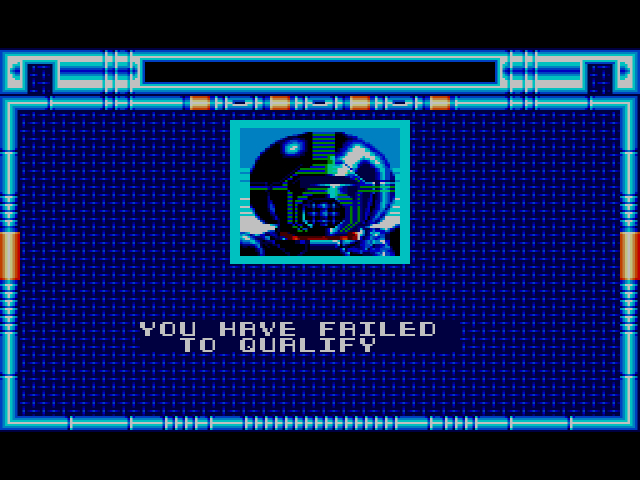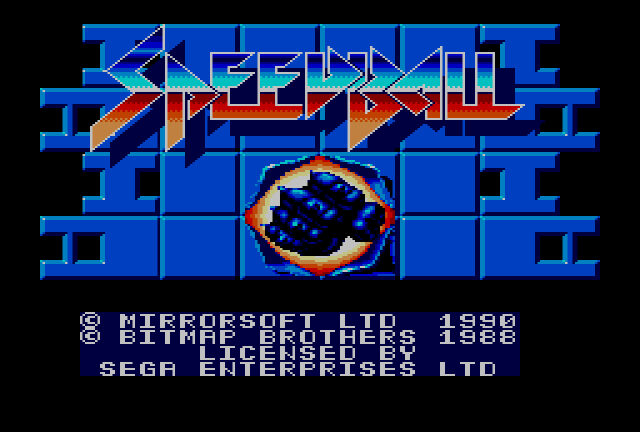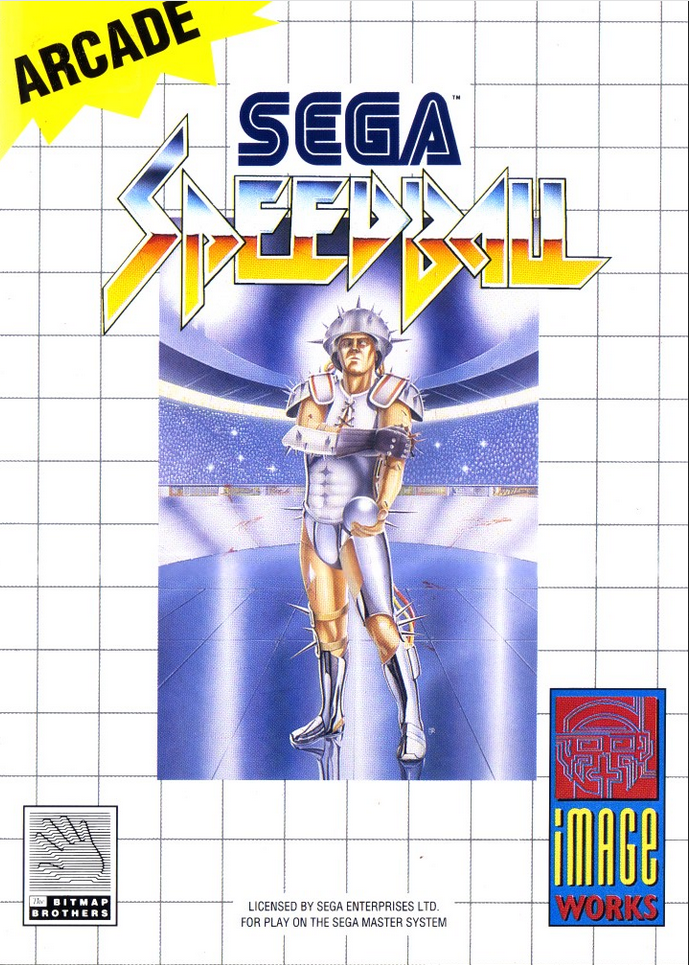
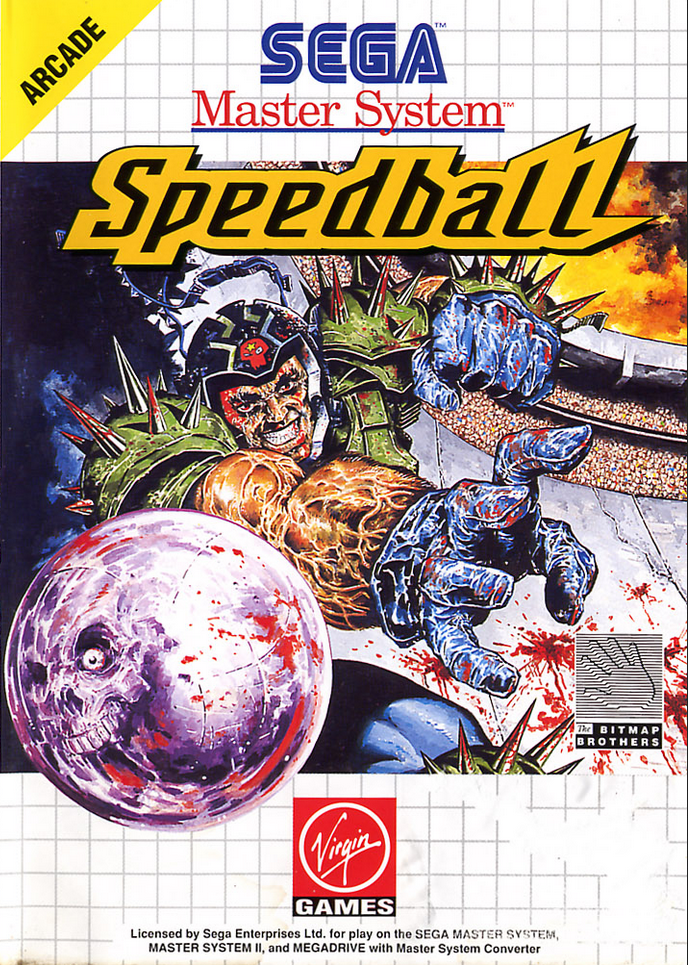
PUBLISHER: Image Works, Virgin Games
DEVELOPER: Bitmap Brothers (port by Mirrorsoft)
RELEASE DATE: 03/1991 – (EU)
ALSO ON: Amiga, Acorn Archimedes, Commodore 64, Atari ST
Within the realms of entertainment, the future is almost always depicted as violent, brutal and dystopian. Books, movies, and video games all seem to like painting a bleak picture of the world and humanity crashing into eventual extinction. Never mind that humans are almost always wrong about such predictions. Never mind that our world has improved in incredible ways, particularly within the last 150 years or so. Why envision a world where things get better instead of worse? Optimism doesn’t sell, folks!
Speedball is the preeminent bloody sport of the future, according to the game’s manual and professional Speedball players. Imagine hockey, except instead of a puck, players throw a ball – to the extreme. No joke, the players’ uniforms are thick metal and have spikes coming out of the shoulder pads. That’s excessive! There is no blood in the actual game, however. Presumably because Speedball‘s a 1991 Master System release, and Image Works/Virgin wanted the game to sell more copies, not less.
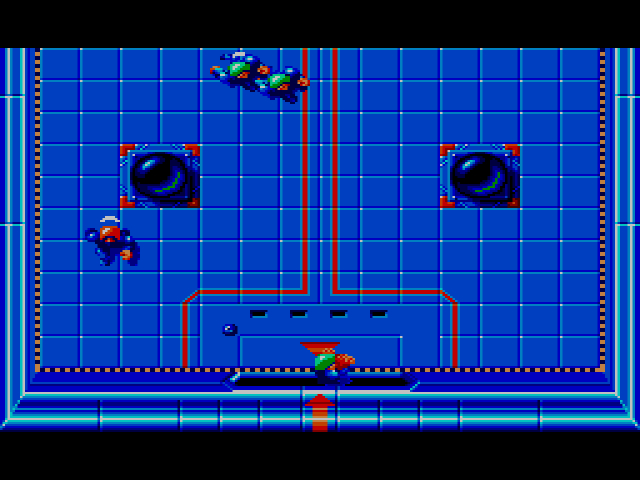
Two teams comprised of five players each hustle around an indoor future arena and try to knock the ball into the opponent’s goal. The arena has bumpers that hinder your movement and bounce the ball in different directions, and a “ball warp tunnel” that magically teleports your ball from one side of the arena to the other. Otherwise, you’ve seen arenas like this before. You also presumably know how sports go. Whichever team gets more points wins the game.
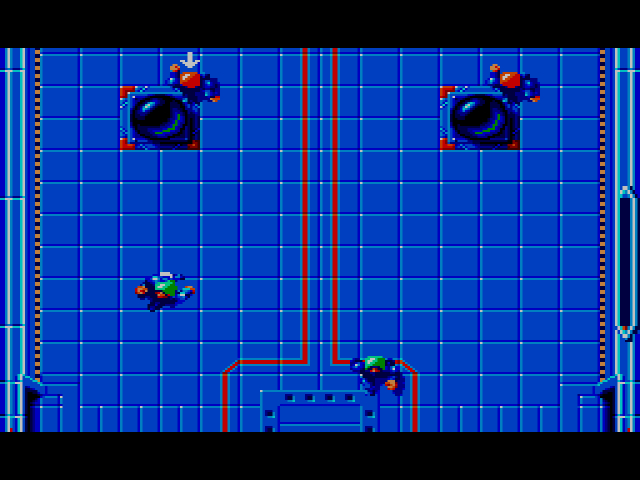
Captains Kef, Conroy, and Verik are your choices for leaders of the teams Verna, Lacerta, and Draco, respectively (“future” names, gotta love ’em). Each of the captains (and by proxy, the teams) have varying stamina, power, and skill ratings. Stamina keeps your team moving fast during the game. The less of it you have, the slower your team will move. Stamina depletes when one of your team is tackled successfully by the opposing side, but can be replenished when you successfully tackle an opponent. Power determines how strong your team is and how much stamina they can tackle from the opposing side. Skill dictates how successful your tackles will be.
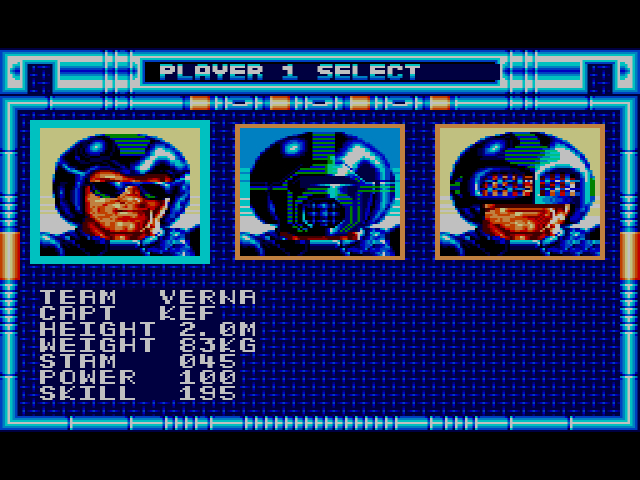
Tackling is a crucial part of the game, although you wouldn’t necessarily know that while you’re playing. The action moves incredibly fast, and it’s easy to get tackled by an opponent and not even realize it. Essentially, tackling almost happens in the background, which is why it’s better to play defense instead of offense here. Good rule of thumb: any time an opponent comes near you, start mashing Button 1 to punch any unfamiliar cornballs who get in your space. Preemptive strikes are almost always more successful.
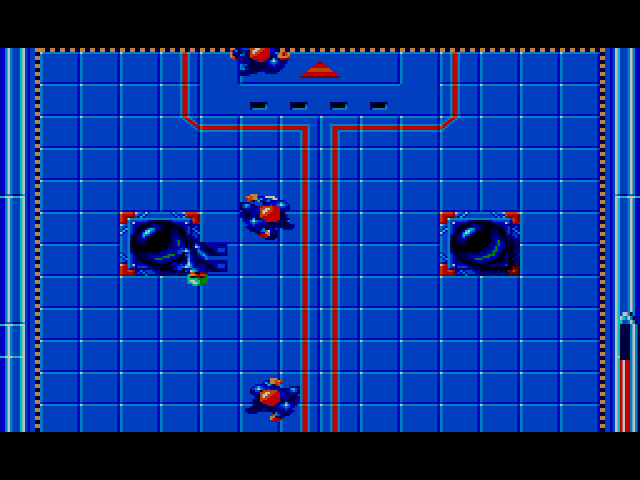
As with most 8-bit sports games, the back-and-forth gameplay is incredibly simple, but developer Bitmap Brothers finds ways to keep the action fresh. On the field are up to ten different letter icons that appear at random and, once collected, change the gameplay for a limited time. For example: ‘F’ freezes the opposing team (except for the goalie, alas), ‘S’ increases your team’s stamina, while ‘W’ turns the ball into a weapon that hurts the opposing side if they touch it. Best of all, the opposing team can’t use these! Not fair, who cares.
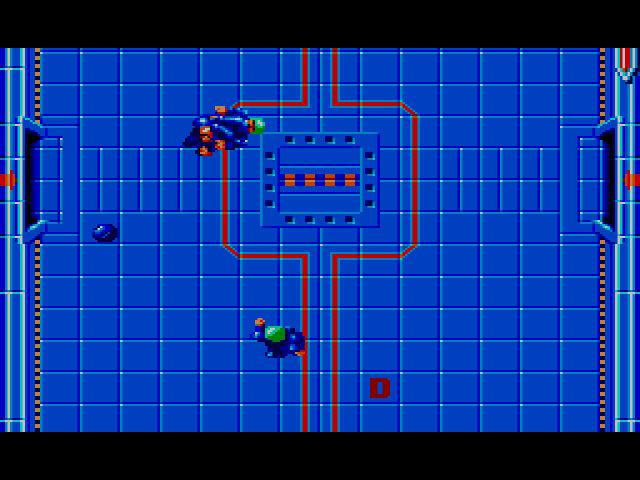
Red tokens can also be collected on the field and allow you to cheat in the next Speedball game. For example: six tokens lets you bribe the referee to give you an extra point, increase your team’s strength, or reduce your opponent’s tackling ability.
Sports games and I typically don’t get along. Football, in particular. I should not be playing football games, let alone reviewing them for posterity on Sega Does (I will continue to do so, however, unless someone else wants to). Speedball is different. The more games I played, the more I appreciated the game’s incredible speed, tight controls, and satisfying action. Kicking and passing the ball and running across the field is enjoyable as is, but those extra options that allow you to cheat and change the course of the game really make Speedball something unique. Best of all, the game is more absurd than it is ruthless. Speedball can come hang out in my more optimistic vision of the future any day.
B
